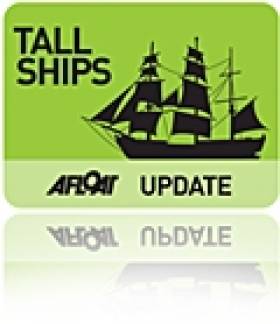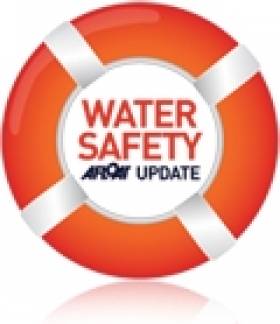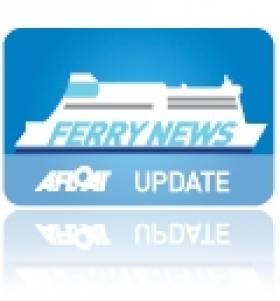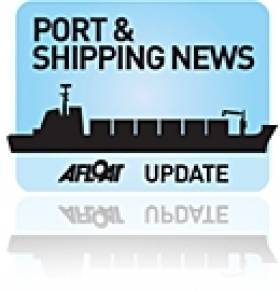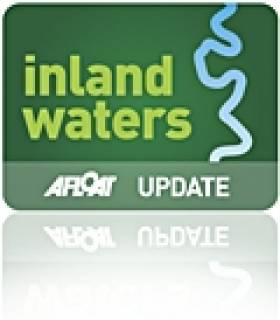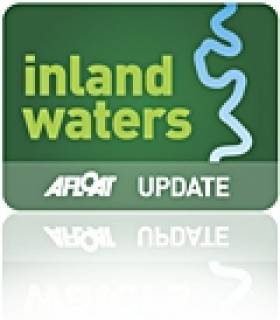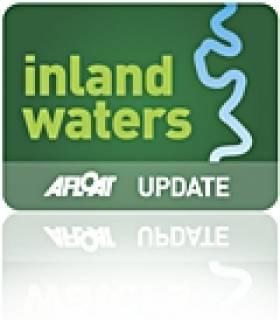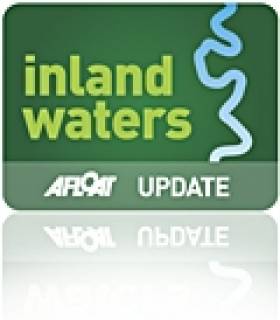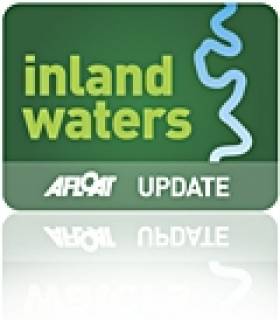Displaying items by tag: Marine Notice
Requirements for Recreational Craft at Tall Ships Races
The latest Marine Notice from the DTTAS includes important information for recreational craft expected to attend the Tall Ships Races in Waterford from 30 June to 3 July.
Race organisers and the Waterford harbour master have issued an approved water safety plan for the marshalling of spectator boats for the time the tall ships are in port and for the start of the race off Hook Head.
Skippers and crew must comply with all instructions and be aware of their obligations under existing maritime legislation (regarding avoidance of collisions, preventing reckless behaviour and ensuring correct safety equipment is on board).
Boat owners intending to visit should contact the harbour master for details on restricted areas and berthing spots via the Port of Waterford website or directly at 051 974 907.
Restrictions are also in place for passenger boats and ships. Only fully licenced vessels with plying limits listing Waterford as a point of departure are allowed to operate during the event. Temporary changes in plying limits can be made via the Marine Survey Office before 15 June.
Further details are available on Marine Notice No 28 of 2011 which is available to read or download HERE.
E-mail Changes for Department of Transport
The Department of Transport's latest marine notice reminds all bodies and individuals who have dealings with the department that it has now been renamed as the Department of Transport, Tourism and Sport.
As a result of this, all departmental e-mail addressed have been changed, and will now end with dttas.ie. E-mail spam filters may need to be updated to reflect the new change to continue sending or receiving e-mails from the department.
A PDF of Marine Notice No 20 of 2011 is available to read/download HERE.
Corrib Drilling Advisory to Vessels
The Department of Transport's latest marine notice advises on the start of offshore drilling operations by Shell Ireland at the Corrib gas field in Co Mayo.
Drilling is scheduled to begin on or around 13 April, to last for approximately four months. The notice gives details of all planned locations by latitude and longitude.
A safety zone is in place around the gas field development, and all vessels - especially fishing boats - are requested to give the drilling unit a wide berth of at least 500m and keep a strong lookout in the vicinity.
A PDF of Marine Notice No 19 of 2011 is available to read/download HERE.
Passenger Ship Obligations to Assist in Search & Rescue
The Department of Transport's latest marine notice pertains to the requirements for passenger vessels in assisting with search and rescue services.
All passenger ships on international routes - such as ferries and cruise liners - are obliged to have a plan for co-operation with search and rescue operations should their assistance be needed.
The notice outlines that any plan should be developed between the ship itself, the ship company and the Irish Coast Guard. Plans must also be drilled periodically to test their effectiveness.
Ship owners and masters are also obliged to give an indication of the existence of their co-operative rescue plans by way of SeaSafeIreland (SSI) notification. Should that not be possible, the Marine Survey Office of the Department of Transport must be notified directly.
A PDF of Marine Notice No 18 of 2011 is available to read and download HERE.
Reporting Inadequate Facilities for Handing Ship-Generated Waste
The Department of Transport's latest marine notice lays out the format for reporting inadequate harbour facilities for handling ship-generated waste.
Shipping companies depend on good standards at receiving ports and harbours in order to comply with the relevant EU directive. But the notice outlines that improvement of port facilities' waste handling is partly dependent on users reporting any inadequacies.
The notice includes the International Maritime Organization's standard format for reporting unsatisfactory port reception facilities.
For all ships, reports should be sent to the relevant port authority as well as the Ship-Source Pollution Prevention Section of the Department of Transport. Non-Irish flagged ships in Irish ports should also send any reports to the ship's flag state.
A PDF of Marine Notice No 17 of 2011 can be viewed/downloaded HERE.
Marine Notice: Grand Canal Shannon Harbour
Owners are advised to monitor and tend mooring lines as levels may fluctuate at the time of re-filling.
Charles Lawn
Lt Cdr (rtd)
Inspector of Navigation
27 Jan 2011.
Tel: 00 353 (0)90 6494232
Marine Notice: Erne System, Lower Lough Erne, Kesh Marina Jetty
Erne System, Lower Lough Erne, Kesh Marina Jetty
Waterways Ireland wishes to advise masters of inland waterways vessels that approximately 15m of this jetty in now available for use while the remainder is closed for repair. Access from the jetty to the car park is also available.
A further marine notice will issue when repairs have been completed.
Any inconvenience that this may cause our customers is regretted.
Charles Lawn
Lt Cdr (rtd)
Inspector of Navigation
12 Jan 2011
Tel: 00 353 (0) 90 6494232
Marine Notice: Lough Key, Erris Bay, Aids to Navigation
Lough Key, Erris Bay, Aids to Inland Waterways Navigation
Waterways Ireland wishes to advise masters of vessels that the area of Erris Bay i.e. South of the line from the entrance to Boyle Harbour to Trinity Island to the west point of Drummans Island is closed to navigation.
Works to replace navigations markers is being undertaken and a marine notice will be issued on completion which is expected to be near the end of February 2011.
Waterways Ireland regrets any inconvenience that this may cause its customers
Charles Lawn
Lt Cdr (rtd)
Inspector of Navigation
12 Jan 2011
Tel: 00 353 (0)90 6494232
Marine Notice: Shannon Navigation
Shannon Navigation Lough Allen Drumshanbo Jetty Sunken Vessel
Waterways Ireland wishes to advise masters on the inland waterways that a vessel has sunk at the north end of Drumshanbo Lock jetty and poses a hazard to any vessel approaching or departing the jetty. Masters are requested to seek advice from the lockkeeper before berthing and to navigate with due caution.
Charles Lawn
Lt Cdr (rtd)
Inspector of Navigation
12 Jan 2011
Tel: 00 353 (0)90 6494232
Waterways Ireland Marine Notice
Masters and owners on inland waterways are advised that water levels at present are particularly low for the time of year; however, rain accompanied by a thaw may alter this situation over a short period of time in light of the amount of snowcover on the ground, to the extent that a variety of different water levels and flow rates may be expected on the navigations. This notice is attached below.


























